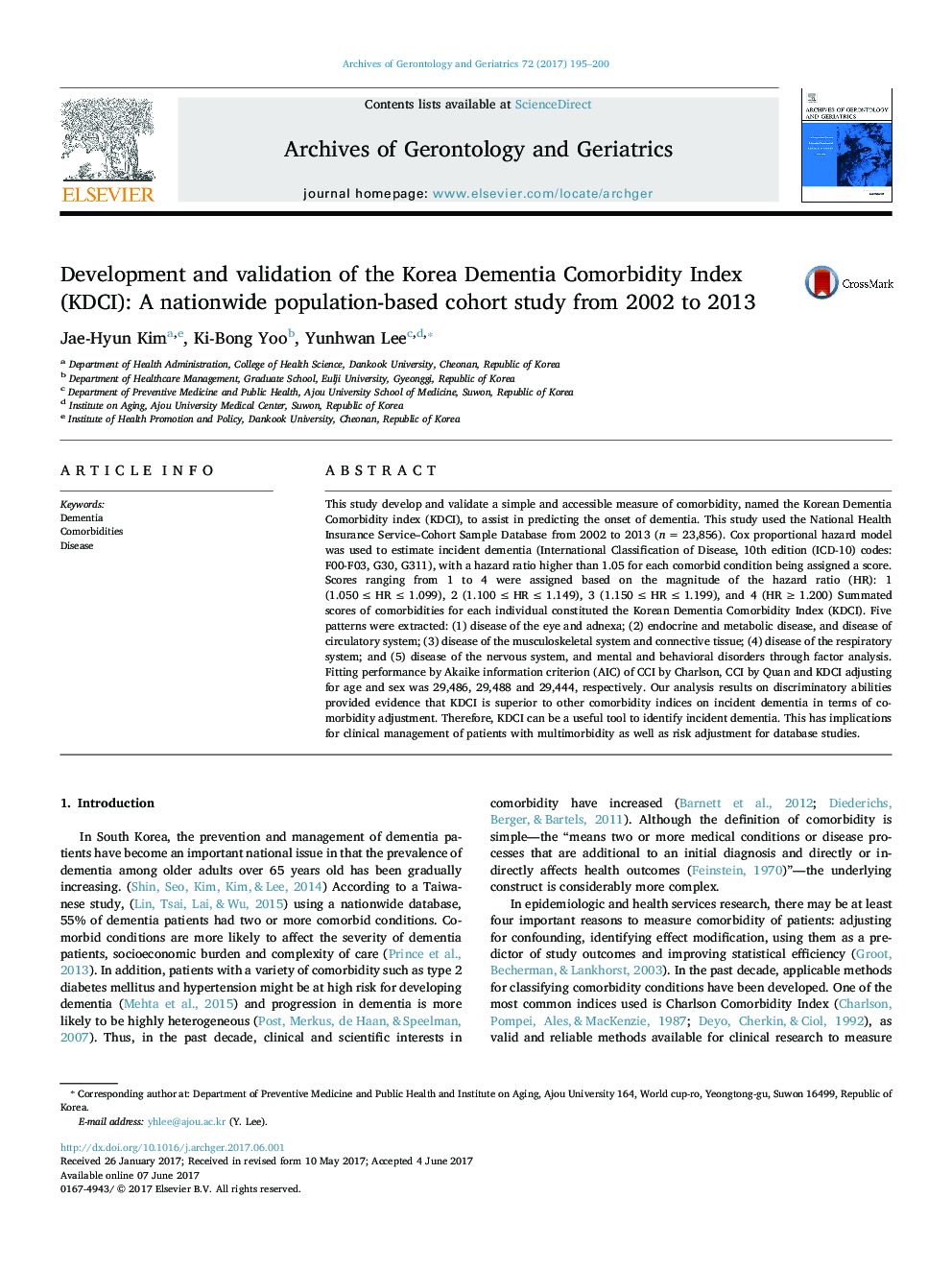| Article ID | Journal | Published Year | Pages | File Type |
|---|---|---|---|---|
| 5500916 | Archives of Gerontology and Geriatrics | 2017 | 6 Pages |
Abstract
This study develop and validate a simple and accessible measure of comorbidity, named the Korean Dementia Comorbidity index (KDCI), to assist in predicting the onset of dementia. This study used the National Health Insurance Service-Cohort Sample Database from 2002 to 2013 (n = 23,856). Cox proportional hazard model was used to estimate incident dementia (International Classification of Disease, 10th edition (ICD-10) codes: F00-F03, G30, G311), with a hazard ratio higher than 1.05 for each comorbid condition being assigned a score. Scores ranging from 1 to 4 were assigned based on the magnitude of the hazard ratio (HR): 1 (1.050 â¤Â HR â¤Â 1.099), 2 (1.100 â¤Â HR â¤Â 1.149), 3 (1.150 â¤Â HR â¤Â 1.199), and 4 (HR â¥Â 1.200) Summated scores of comorbidities for each individual constituted the Korean Dementia Comorbidity Index (KDCI). Five patterns were extracted: (1) disease of the eye and adnexa; (2) endocrine and metabolic disease, and disease of circulatory system; (3) disease of the musculoskeletal system and connective tissue; (4) disease of the respiratory system; and (5) disease of the nervous system, and mental and behavioral disorders through factor analysis. Fitting performance by Akaike information criterion (AIC) of CCI by Charlson, CCI by Quan and KDCI adjusting for age and sex was 29,486, 29,488 and 29,444, respectively. Our analysis results on discriminatory abilities provided evidence that KDCI is superior to other comorbidity indices on incident dementia in terms of comorbidity adjustment. Therefore, KDCI can be a useful tool to identify incident dementia. This has implications for clinical management of patients with multimorbidity as well as risk adjustment for database studies.
Keywords
Related Topics
Life Sciences
Biochemistry, Genetics and Molecular Biology
Ageing
Authors
Jae-Hyun Kim, Ki-Bong Yoo, Yunhwan Lee,
